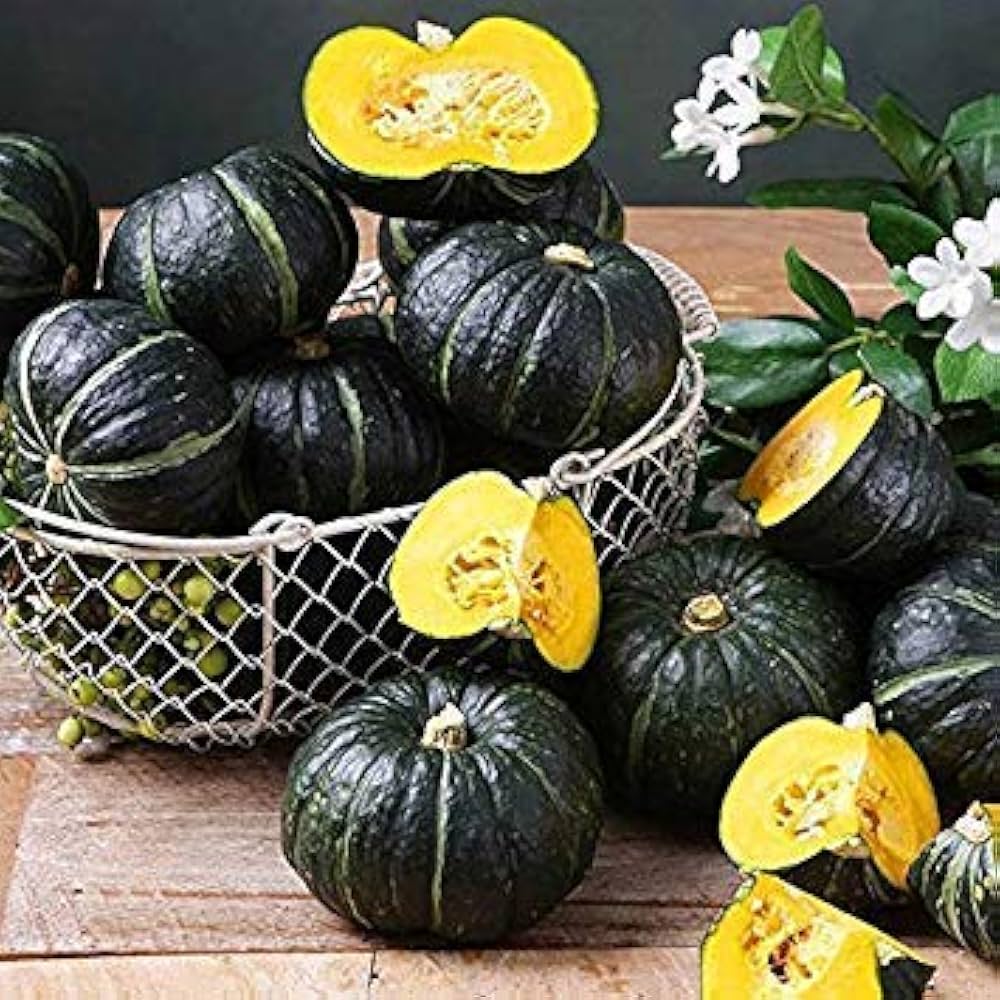Japanese Kikuza Cucurbita moschata vegetable seeds for kitchen garden and traditional cooking use
Couldn't load pickup availability
Description
Japanese Kikuza Seeds
Characteristics and Uses of Japanese Kikuza Plants
Japanese Kikuza, also known as the Japanese Chrysanthemum, is a stunning flowering plant celebrated for its large, vibrant blooms that come in a variety of colors, including yellow, white, and pink. These flowers are not only visually striking but also carry cultural significance in Japan, often symbolizing longevity and rejuvenation. Kikuza plants are typically grown for ornamental purposes, making them a popular choice for gardens, floral arrangements, and traditional Japanese ceremonies. As a non-GMO option, these seeds are perfect for gardeners who appreciate natural growing practices and wish to cultivate a beautiful and meaningful addition to their gardens.
Growing Conditions for Japanese Kikuza Plants
- Soil Type: Prefers well-draining, fertile soil enriched with organic matter.
- Sunlight: Thrives in full sun to partial shade, requiring at least 6 hours of direct sunlight daily.
- Temperature: Best suited for temperate climates, ideally between 60°F and 75°F for optimal growth.
Planting Tips for Japanese Kikuza
- Seed Preparation: Start seeds indoors 8-10 weeks before the last frost date for best results.
- Planting Depth: Sow seeds at a depth of about 1/4 inch in well-prepared soil.
- Spacing: Space plants 12-18 inches apart to allow for proper air circulation and growth.
Watering Instructions and Tips
- Initial Watering: Water thoroughly after planting to establish strong roots.
- Ongoing Care: Keep the soil consistently moist but not waterlogged; allow the top inch of soil to dry out between waterings.
- Mulching: Apply a layer of mulch around the base to retain moisture and suppress weeds.
Growing Zones
Japanese Kikuza is suitable for USDA zones 5-9 and can thrive in global zones with similar temperate conditions, making it a versatile choice for many gardeners.
Key Benefits & Uses
- Non-GMO seeds ensure a natural growing experience.
- Produces stunning flowers that enhance the beauty of any garden or floral arrangement.
- Attracts beneficial pollinators, promoting biodiversity in your garden.
Best Uses in the Garden & Landscape
- Ideal for flower beds, providing vibrant color and interest throughout the growing season.
- Great for use in mixed borders, adding height and texture to your garden design.
- Can be used in containers for patios or balconies, bringing a touch of elegance to any space.
Conclusion
Choosing Japanese Kikuza seeds from bijaseeds means investing in a beautiful and culturally significant plant that enhances your garden's aesthetic and ecological value. As a big, trusted name in the seed world, bijaseeds offers a wide range of high-quality, non-GMO varieties to gardeners everywhere.
FAQ
How do I grow Japanese Kikuza from seeds?
To grow Japanese Kikuza from seeds, start them indoors 8-10 weeks before the last frost date. Sow seeds at a depth of 1/4 inch in well-draining soil and keep them warm and moist until germination.
When is the best time to plant Japanese Kikuza seeds?
The best time to plant Japanese Kikuza seeds is in the spring after the last frost date, as they thrive in warm temperatures and full sun.
Are Japanese Kikuza plants difficult to grow?
Japanese Kikuza plants are relatively easy to grow, making them suitable for gardeners of all levels. With proper care regarding sunlight, soil, and watering, these plants can thrive and provide stunning blooms throughout the growing season.



